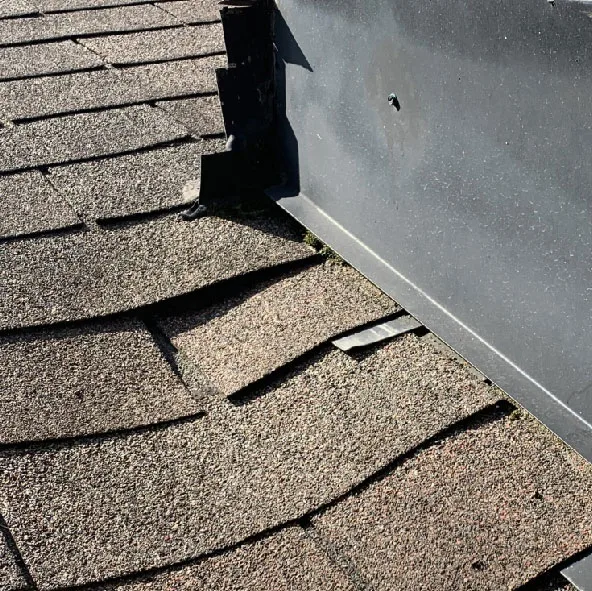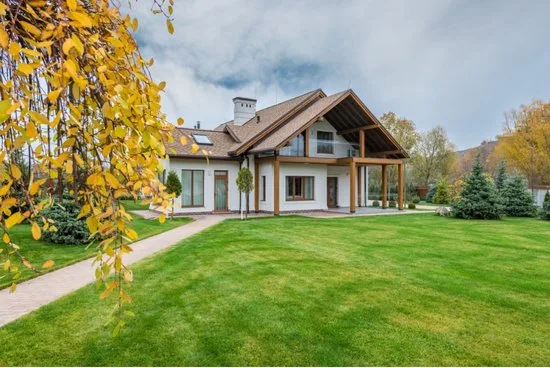There’s nothing quite like the warmth of a crackling fire on a chilly evening. But what if that cozy moment is interrupted by the unpleasant surprise of water stains on your walls or a musty smell near your fireplace?
A leaking chimney might not always be obvious at first, but it can cause serious damage over time. From weakened chimney bricks to costly repairs, chimney leaks are a homeowner’s headache.
The good news? Catching the signs early and taking action can prevent further damage and save you money in the long run.
1. Water Stains on Walls or Ceiling? Repair Roof Flashing and Chimney Bricks
One of the most obvious signs that your chimney is leaking is discoloration on the walls or ceiling near your fireplace. If you notice brown or yellow water stains, moisture is likely allowing water to seep in through cracks in the chimney or improperly installed roof flashing. Solution: A roofing contractor can perform a thorough inspection and repair missing flashing or damaged bricks to prevent further water intrusion.
2. Musty or Damp Odors? Install or Replace a Chimney Cover
A damp or musty smell inside your fireplace is a strong indicator of a leaky chimney. Water penetration through damaged chimney bricks, missing mortar, or an improperly installed chimney cap creates moisture buildup, leading to unpleasant odors. Solution: Installing or replacing a chimney cover or chase cover can significantly reduce water damage by preventing rain and debris from entering your chimney structure.
3. White Efflorescence on Chimney Bricks? Apply Water Repellent
If your brick chimney has a white, powdery substance on its surface, this is efflorescence, a sign of water penetration. While it may seem like a cosmetic issue, it actually points to water evaporating through the bricks, which weakens the chimney over time. Solution: Applying a water repellent or chimney saver treatment can create a protective barrier against further water damage while still allowing moisture to escape.
4. Cracked or Spalling Bricks? Schedule Chimney Repair
Damaged bricks and missing mortar joints are major indicators of a leaking chimney. When water gets into the bricks and mortar joints, it can freeze and expand in the colder months, causing bricks to crack, chip, or flake. Over time, this deterioration can compromise the entire chimney structure. Solution: Chimney repair techniques like tuckpointing, where the mortar is replaced, or rebuilding sections of the chimney can fix the damage. A reputable roofing contractor can also recommend preventive measures to keep your chimney strong for years to come.
5. Rusty Chimney Components? Inspect and Replace Metal Parts
Rust on your chimney cap, chase cover, damper, or flue is a telltale sign of a leaky chimney. Metal flashing, chimney covers, and dampers are meant to prevent chimney leaks, but once they start rusting, they lose their effectiveness, allowing water to seep inside. Solution: Regularly inspect your chimney for rust and have damaged components replaced to prevent further water damage and costly repairs.
6. Dripping Sounds or Visible Water? Call a Chimney Sweep Immediately
If you hear dripping water inside your chimney when it rains, or worse—see actual water pooling inside—it’s clear your chimney is leaking. Leaking water can damage the chimney liner, concrete crown, and even the attic, leading to major repair expenses. Solution: A professional chimney sweep can conduct a thorough inspection, replace a damaged flue liner, and fix any cracks in the chimney crown or bricks.
How to Prevent Chimney Leaks
1. Install a Proper Chimney Cap to Block Rain and Debris
A well-fitted chimney cap is the only place at the very top of your chimney where rain, debris, and even small animals can enter. Having a cap installed or replaced is a great idea to prevent moisture from entering your chimney.
2. Repair or Replace the Chimney Crown to Prevent Water Intrusion
The concrete crown at the top of the chimney acts as a protective barrier, directing water away from the flue. If it’s cracked or deteriorated, water can seep into the chimney, causing further water damage. Having it sealed or replaced can significantly reduce water intrusion.
3. Maintain Roof Flashing to Stop Water Penetration
Roof flashing is the metal layer that seals the gap between your chimney and roof. Missing flashing or improperly installed flashing can allow leaks. A roofing contractor can fix flashing issues to prevent costly repairs in the future.
4. Waterproof the Chimney to Protect Against Moisture Damage
Applying a water repellent to the chimney bricks can protect them from moisture while allowing water vapor to escape. This proactive measure helps prevent chimney leaks and extends the life of your brick chimney.
5. Regularly Inspect Your Chimney for Early Leak Detection
Scheduling annual chimney inspections by a professional with proper training ensures early detection of issues like cracks, missing mortar, or moisture problems before they lead to major damage. A reputable roofing contractor or chimney sweep can provide professional assistance to keep your chimney in peak condition.
Don’t Wait—Fix Your Leaking Chimney Today
A leaking chimney won’t fix itself, and waiting too long can lead to costly repairs and further water damage. If you’ve noticed any of these warning signs, it’s time to take action. Whether you need chimney repair, a new chimney cap, or preventive measures like waterproofing, GMT Home Services is here to help. Contact us today to safeguard your home and keep your chimney in top shape all winter long!

